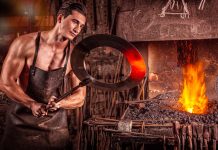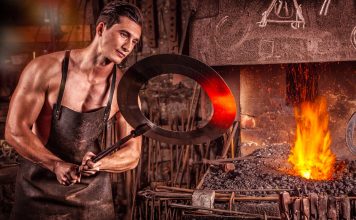Combine those elements with the new Mustang’s improved handling characteristics, more standard safety and technology features and its already-strong safety and quality performance and reputation, and it’s easy to see how the muscle car known around the world delivers on the promise of fast, fun and affordable performance for a whole new era.
“More than 9 million customers have made Mustang one of the world’s most beloved automotive and cultural icons,” said Mark Fields, Ford’s president of The Americas. “Making sure this modern legend lives up to their expectations has been a driving force for the team, which went to great lengths – gathering customer input everywhere from race tracks to Main Streets in cities throughout the U.S. – working to create the best Mustang ever.”
For 2010, the team delivered. “The new Mustang marks new levels of both power and refinement,” said Paul Randle, Mustang chief engineer. “We’ve designed and engineered this to be the next classic Mustang that everyone talks about for years and years.”
In true Mustang tradition, there is a “steed for every need.” At launch, customers can choose from a V-6 or V-8 with their choice of coupe, convertible or innovative glass roof, plus several new options and features delivering the opportunity for customers to personalize their cleaner, meaner-looking Mustangs.
“The best Mustangs have always been the ones that connect young America with the spirit of the times – and the 2010 does exactly that,” said J Mays, Ford’s group vice president of Design. “The new Mustang is close to the magnetic center of the original, fully loaded with the swagger you’d expect, but with modern refinement and attention to detail like you’ve never seen in a muscle car.”
It starts with the more aggressive grille, punctuated with the first new Mustang emblem since the car’s introduction in 1964. Both the V-6 and GT have brand-new sculptured front-end designs unique to each model. The headlamps and turn indicators, now integrated into one unit, are modern interpretations inspired by the 1970 Mustang. On the V-6, the fog lamps are located on the lower fascia, while on the GT, the fog lamps are again located in the upper grille – but are smaller than the outgoing model, similar to the original lamps of the 1967-68 models that inspired them.
“We understand Mustang’s heritage and iconic status it has in the world and as a symbol of Americana,” said Peter Horbury, executive director of Design, The Americas. “We wanted to create a face that is more muscular but unquestionably, unequivocally Mustang and carry that spirit through to the entire car.”
The exterior sheet metal, except for the fast-back roofline, is all new for 2010. At the front, the new headlamps, lower fascias, fenders and grille are capped by a powerdome hood that adds to the muscular appearance while functionally allowing for enhanced air cooling of the engine.
Mustang’s washer-fluid nozzles are tucked into the cowl, while the antenna has been moved to the rear, both of which create a cleaner appearance while also reducing wind noise.
Front rear fenders feature taut, sculptured wheel flares, like a tight skin stretched over the wheels. A classic spear character line on the doors leads to a modern indication of “hip” rear fenders. “It helps give the car aggressive, forward direction, like it’s ready to jump,” said Doug Gaffka, Mustang chief designer.
The rear end design features aggressively angled rear corners, a sculptured decklid and prominent rear badge. A rear-view camera incorporated into the spoiler is available on some models.
A notable new tail lamp design features three LED bulbs firing sequentially from the inside for turn indication. The sequential bulbs were a distinct Mustang feature in the ’60s and comeback to the 2010 for the first time since then. Locating the reverse lamps vertically creates a modern version of the Ford classic three-lens taillamp.
“All of the Bullitt elements are the base foundation of the GT,” said Randle, noting engine and chassis improvements. “We also applied some improvements gained from Mustang racing. We’re learning constantly and always giving that to the customer on the base car.”
The wheel-and-tire combinations are 1 inch bigger across the board, ranging from 17 to 19 inches, which helps improve handling and braking. The shocks have been retuned on all models as well.
“We adjusted the springs, stabilizer bars and shocks to better balance the ride, steering and handling for all models, which results in a more engaging driving experience,” adds Mustang Vehicle Engineering manager Tom Barnes. “The 2010 Mustangs feel more controlled for steering and handling, yet retain a good ride balance.”
The 2010 Mustang 4.6-liter V-8 benefits from innovations from the popular Bullitt model. Power has increased to 315 horsepower.
“It runs on regular gasoline, but if you put in premium it has adaptive calibration that will give you even better mid-range torque,” Barnes said, adding that Easy Fuel™, Ford’s innovative capless fuel system, is standard on all models.
“It’s an upgrade to the most-robust, most-accessorized engine in the marketplace today,” Randle added. “No one has the reliability, no one has the upgraded options. This is a fantastic engine, proven on the race track, the drag strip and on the highway.”
AdvanceTrac™ Electronic Stability Control (ESC) is now standard and complements Mustang’s all-speed traction control and anti-lock braking system (ABS).
“It gives a driver a little more confidence that in any type of condition the car will maintain what they want it to do,” Barnes said. “The 2010 Mustang improves ride quality and maintains world-class steering and handling.”
In addition to all of the design and driving dynamics improvements, the 2010 Ford Mustang is engineered to maintain its top government safety ratings. Standard safety equipment includes: dual stage front driver and passenger air bags; front seat-mounted side air bags; and, Ford’s Personal Safety System.
— New muscular, sculptured exterior design is a modern evolution of Mustang heritage
— Powerful new interior design features world-class craftsmanship, upgraded materials and new technology
— Performance improvements – larger wheels, retuned suspension and increased horsepower – developed from engineering experience on the race track and from special editions including the Mustang Bullitt


































